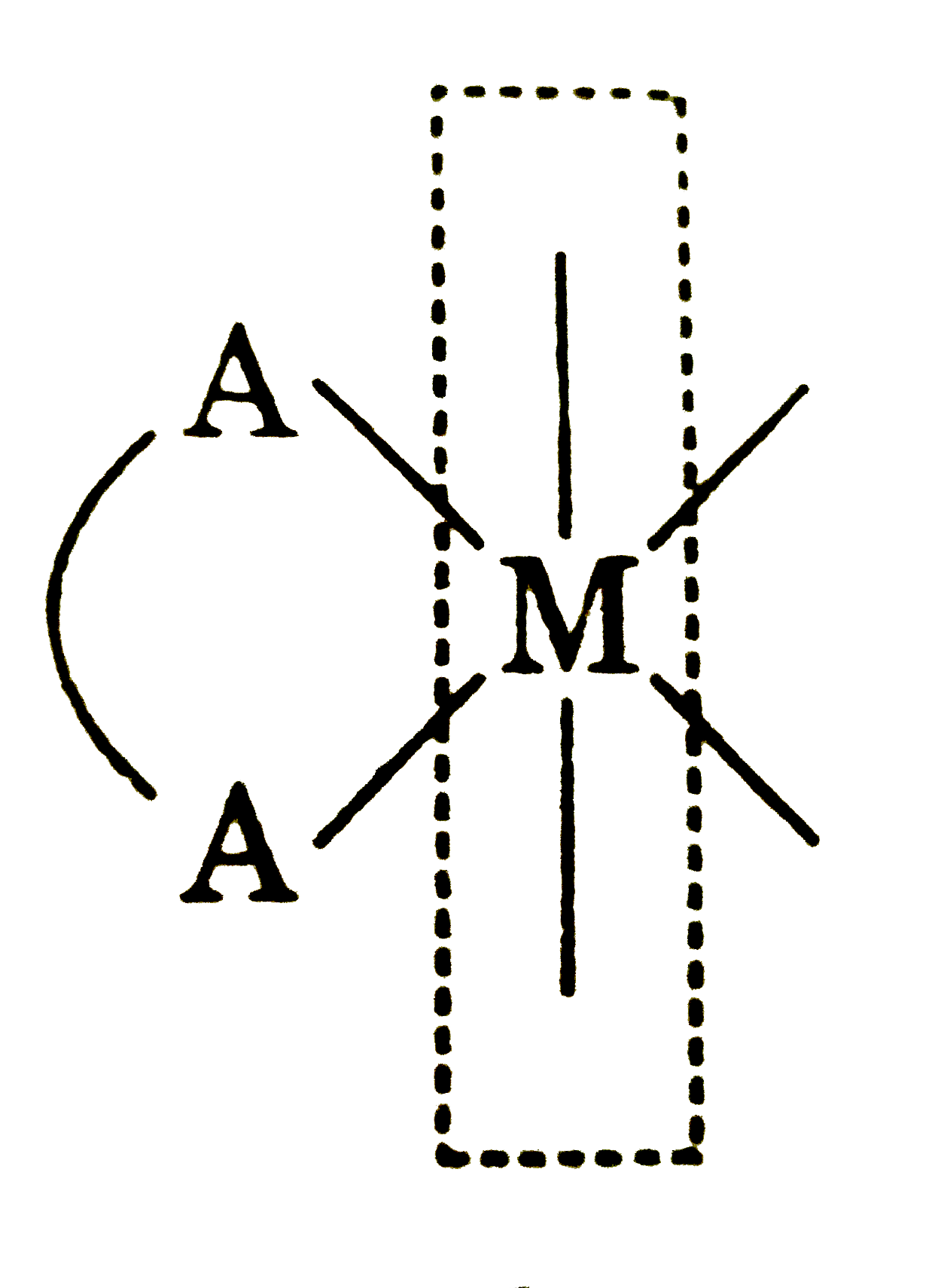How many total possible isomers are present in the following complex ?
[Co(en)NH3(H2O)(Cl)(NO2)]
24
48
96
12
The correct Answer is:A
[M(AA) abcd]

a oppb→1
a opp c→1
a opp d→1
opp c→1
bopp d→1
b opp d→16–

Topper's Solved these Questions
- COORDINATION COMPOUNDSBOOK - GRB PUBLICATIONCHAPTER - COORDINATION COMPOUNDSEXERCISE - G. Organometallic Compounds, Synergic Bonding
52 Videos
- COORDINATION COMPOUNDSBOOK - GRB PUBLICATIONCHAPTER - COORDINATION COMPOUNDSEXERCISE - REASONING TYPE
59 Videos
- COORDINATION COMPOUNDSBOOK - GRB PUBLICATIONCHAPTER - COORDINATION COMPOUNDSEXERCISE - E. Stability, Colour and Magnetic Properties of Complexes
60 Videos
- CHEMICAL KINETICSBOOK - GRB PUBLICATIONCHAPTER - CHEMICAL KINETICSEXERCISE - Subjective Type
63 Videos
- D-BLOCK ELEMENTSBOOK - GRB PUBLICATIONCHAPTER - D-BLOCK ELEMENTSEXERCISE - Subjective Type
18 Videos
Similar Questions
How many geomatrical isomers are possible for each of the following complexes ?
(a)[Pt(NH3)2(SCN)2] (b)[CoCl2Br2]2−(tetrahedral)
(c)[Co(NH3)3(NO2)3] (d)[Pt(en)Cl2]
(e)[CrBr2(en)2]+ (f)[Rh(en)3]3+
View SolutionHow many geometrical isomers are possible in the following coordination entities ?
[Co(NH3)3Cl3]
View Solution
Knowledge Check
How many total possible isomers are present in the following complex ?
[Co(gly)NH3H2O(CN)(NO2)]A24B48C96D12How many total possible isomers are present in the following complex ?
[Co(gly)NH3H2O(CN)(NO2)]A24B48C96D12How many total possible isomers are present for [Pt(CN)2(NO2)2]2− ?
A2B4C10D19
How many geometrical isomers are possible for the complex ion [Cr(NH3)(OH)2CI3]2−.
View SolutionHow many isomers are possible for the neutral complex, [Co(NH3)3Cl3] ?
View SolutionHow many total possible isomers are present for [Pt(CN)2(NO2)2]2− ?
View SolutionHow many geometrical isomers are possible for the square planar complex [Pt(NO2)(py)(NH3)(NH2OH)]NO2
(a) Four
(b) Five
(c ) Eight
(d) Three .
View SolutionHow many isomers are possible for the complex ion [Cr(NH3)Cl3(OH)2]2− ?
View Solution
